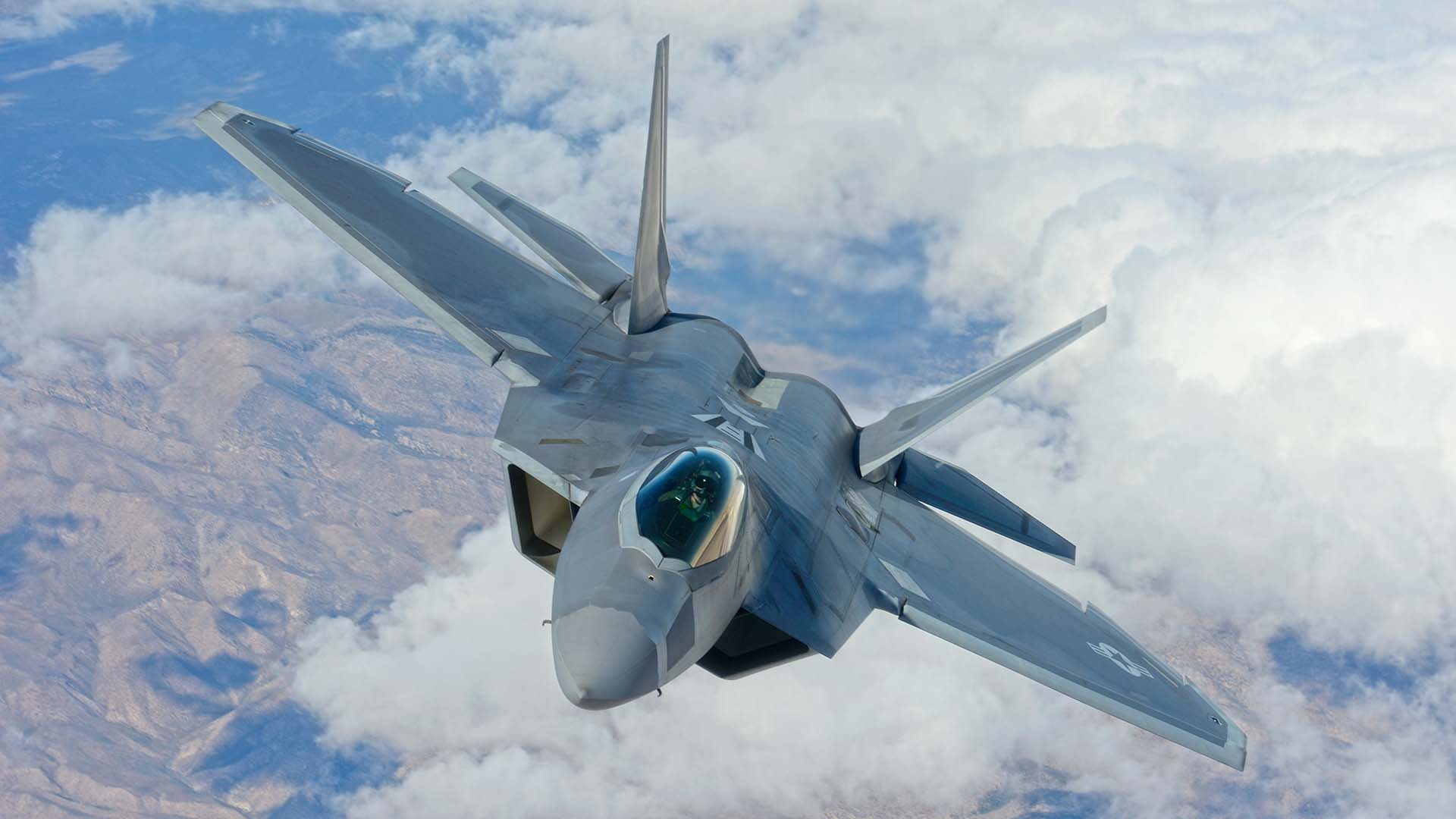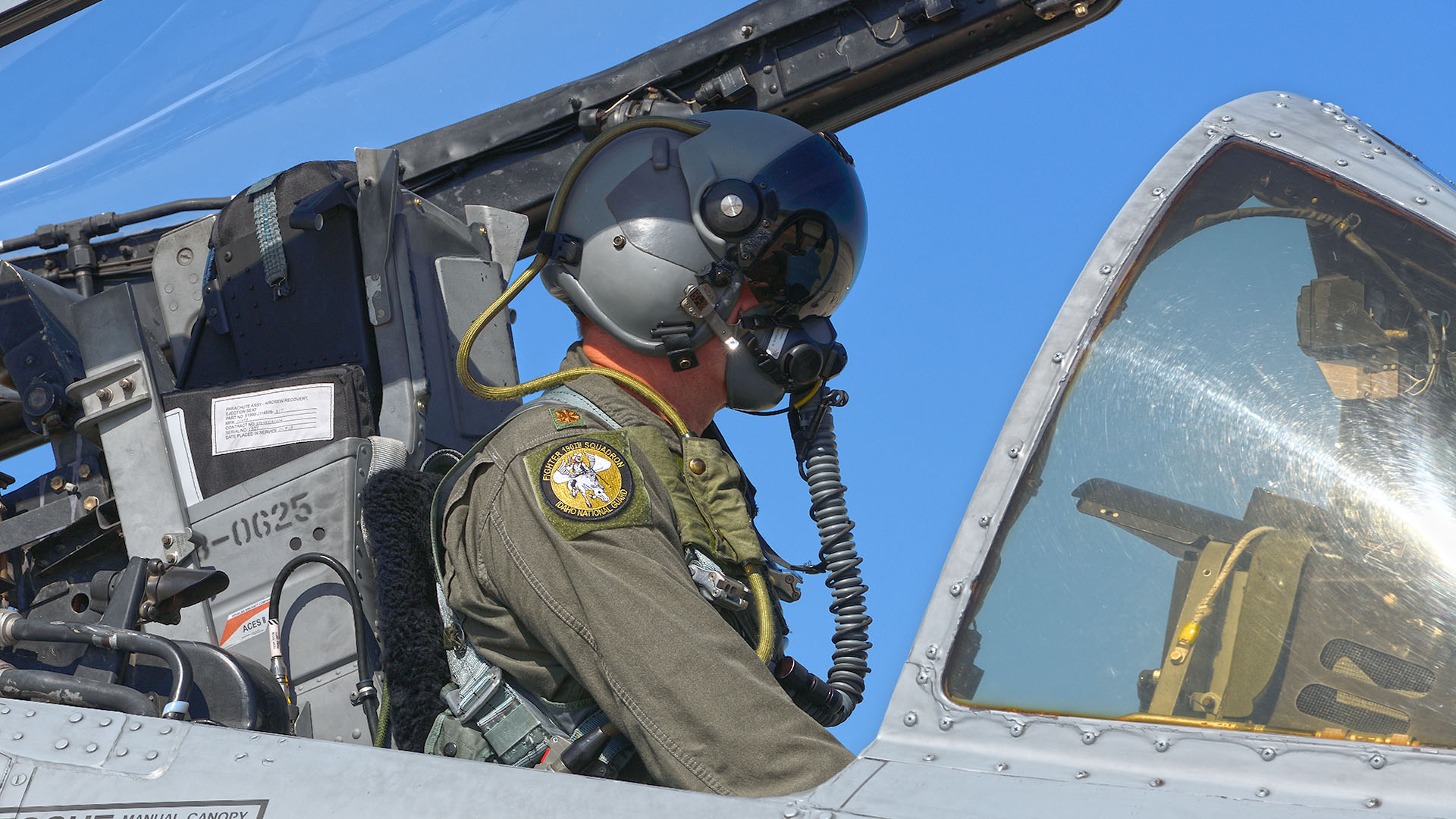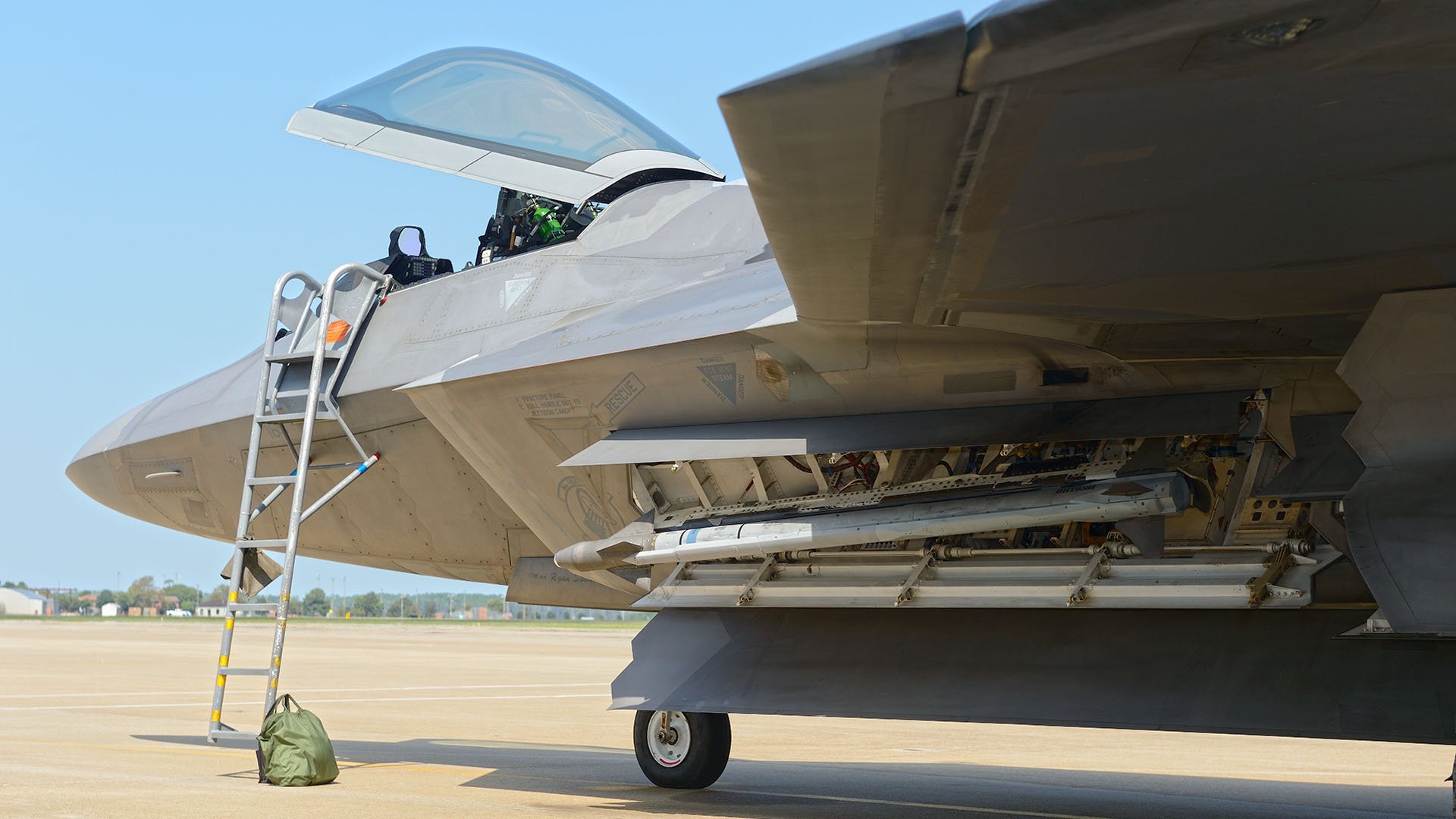When discussing modern air-to-air fighter aircraft, the U.S. Air Force’s F-22A Raptor is typically smothered with superlatives, yet to this day its pilots still don’t wear a helmet-mounted display — one of the modern standards for even lesser fighters. After being dropped from the original program requirements due to time, cost, and integration hurdles, the U.S. Air Force openly discussed plans to try and upgrade the jet with such a system back in 2013, but operational squadrons have never received them.
The War Zone has received an exclusive image that clearly shows a Raptor operational test pilot wearing the Thales Scorpion Helmet-Mounted Display (HMD) in 2014. The photograph was apparently taken at Nellis Air Force Base, Nevada, during the planned test program that was outlined the year before. However, the official results of this evaluation and any further fielding plans remain unknown.
The USAF wanted the F-22 to have an HMD by 2020 to tie in with weapons upgrades. Although pilots were reportedly impressed with Scorpion, unknown issues kept it from being deployed across much of the relatively small F-22 fleet.
The Scorpion HMD system fits onto the Raptor pilot’s existing helmet, adding a “monocle” in front of one eye to display high-definition color symbology. Unlike early iterations of the widely adopted Joint Helmet Mounted Cuing System JHMCS, it is adaptable to night vision goggles. These fit in front of the eyepiece so the pilot can still see the data it displays in darkness. The modification also adds a somewhat domed visor, which does appear rather large under the Raptor’s sleek canopy. Judging by the image, it seems the increased size of the helmet might have impedeed the pilot’s ability to look round at extreme angles in the rear hemisphere.

As noted earlier, the Raptor was always intended to have an HMD. Although leveraging such a system for short-range air-to-air missile targeting has been standard fare for Russian fighters for decades, it wasn’t until the mid-2000s when the F-15 Eagle combined the Joint Helmet Mounted Cueing System (JHMCS) with the high-off-boresight capabilities of the AIM-9X Sidewinder that the USAF was able to employ such a capability. Since then it has become widespread across the Air Force and Navy tactical jet inventories.
Modern fighter pilots are bombarded with a wealth of information from the aircraft’s various sensors. Being able to stay “heads-up,” looking out of the cockpit, and monitoring critical flight information and targeting data, is a valuable part of overall situational awareness.
It is well known that attempts to magnetically “map” the F-22’s cockpit for JHMCS proved problematic, with low-observable treatments and other cockpit design elements hampering its integration. As F-22 procurement was slashed from 750 aircraft to just 187 production Raptors, the fighter became a lower priority for the Pentagon, especially as the larger and export-capable F-35 program grew in stature. Despite the Raptor exhibiting blistering performance in aerial engagements during exercises, funding for upgrades had to be rationed.
Meanwhile, most other tactical fighters in the U.S. inventory were receiving HMDs, initially JHMCS, and those not selected for this system subsequently began receiving the Scorpion system. It was initially fielded in the A-10C Thunderbolt II, and later in earlier-Block F-16C/Ds belonging to the Air National Guard and Reserve.

Meanwhile, F-22 upgrades became focused on its secondary air-to-ground capability amid a need to give the Raptor more diverse capabilities and not just focused on the air-to-air role. Increment 3.1 in 2011 added “Global Strike” capabilities, with provision for the GBU-39/B Small Diameter Bomb.
Increment 3.2A added a range of combat identification improvements and a receive-only mode for the Link-16 data link. However, the follow-on 3.2B was focused on improved air-to-air missiles via the short-range AIM-9X and AIM-120D Advanced Medium-Range Air-to-Air Missile (AMRAAM).
The USAF made significant ovation when the F-22 received the AIM-9X, which was a long-overdue upgrade over the AIM-9M that it previously carried. However, the lingering lack of an HMD meant Raptor pilots were unable to leverage the missile’s high-off-boresight abilities beyond using the radar alone to direct the missile’s seeker. Despite the Raptor’s impressive thrust-vectoring maneuverability, the ability to target enemy aircraft at short range without having to point the jet’s nose at them can mean the difference between winning and losing in a dogfight. The HMD also increases situational awareness dramatically for the pilot.

“Thrust vectoring gives you the ability to point, but it doesn’t mean you’re automatically going to win,” an F-22 Weapons Officer told The War Zone.
The F-22’s strength starts with its prowess in beyond-visual-range (BVR) air combat — killing an enemy aircraft at long range. However, modern aerial engagements often require visual identification of the target before firing due to rules of engagement to mitigate the chance of killing a friendly asset. Moreover, an F-22 only carries six long-range AIM-120s, and therefore could easily be overwhelmed by enemy mass. Faced with a large formation of opposing fighters, “leakers” could potentially get past the barrage of long-range missiles and into close-quarters air combat. Moreover, the increasing use of modern infrared search and track (IRST) systems means the stealthy Raptor cannot count on the element of surprise.
The Raptor’s stealth, high-situational awareness, and blistering performance are a clear advantage. Theoretically, an adept F-22 pilot should be able to sneak up on an enemy aircraft and deliver a knockout punch without the opponent ever knowing it was there. But, as laid out above, that isn’t always the case and the possibility of getting into that close-in dogfight means that a surprisingly high emphasis is placed on this type of training at operational F-22 squadrons.
Slowing down to point the jet’s nose is a classic Achilles’ heel and risks potential attack. Maintaining a high energy state is key in multi-aircraft close-range engagements. While the thrust vectoring clearly has its uses in close-range air combat, being able to out-turn the enemy, and bring legacy air-to-air missiles and the gun to bear, the lack of HMD remains a critical deficiency now that the AIM-9X is integrated onto the jet.

The F-22 first fielded the AIM-9X under Update 5 after a lengthy and drawn-out test program. This was an interim upgrade ahead of the full Increment 3.2B. While it provided the Raptor with an off-boresight close-in capability, it cannot be used to its full potential without a helmet cueing system.

“We have AIM-9X on the jet now, which is a great improvement, but we would love to have a helmet [mounted cueing system],” one Raptor pilot told The War Zone. “It’s more critical for our fourth-generation colleagues than it is for the Raptor, because typically I can arrive in the bandit’s six o’clock undetected.”
Another admitted the F-22 remains at a disadvantage under some circumstanced in the close fight due to the lack of helmet sight. “We are not equal to the threat in that environment.”

As we mentioned earlier, without an HMD, the F-22 must rely on its radar to provide cueing and telemetry to AIM-9X’s Block II missile’s data-link in what is called “helmetless high off bore-sight” (HHOBS). So instead of the helmet providing the targeting info, the radar does. This has some great advantages and severe limitations, but suffice it to say the F-22 is unable to take full advantage of the missile’s engagement envelope without the pilot wearing an HMD. You can read more about the whole F-22 helmet-mounted display and AIM-9X saga in this past feature of ours.
A recent Air National Guard report entitled “Weapons Systems Modernization Priorities” states: “Multiple simulations and an operational utility assessment conducted by the 422nd Test and Evaluation Squadron demonstrated that using an HMD provides a distinct first- shot, first-kill advantage. Although this advantage applies primarily to within-visual-range engagements, the HMD also substantially increases situational awareness during beyond-visual- range intercepts.”
Various efforts have been ongoing since 2015 towards finally giving the F-22 an HMD by this year, however, none have come to fruition. Studies are reported to include options for an all-new helmet, which could see a “toned-down” version of the F-35’s HMD being adopted. We are not aware of any progress in fielding such a system at this time.
It is incredible that the world’s most expensive fighter aircraft, a thoroughbred design built to absolutely dominate air-to-air combat, still lacks a capability that is so prevalent in other types, especially when considering how the USAF relies so heavily on a small fleet of Raptors for air supremacy.
Contact the author: jamie@thedrive.com
